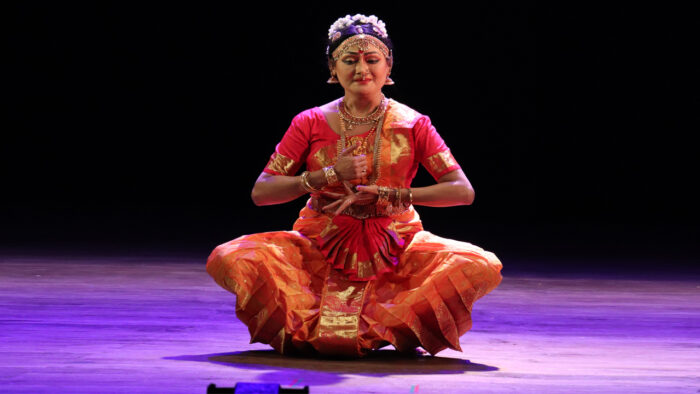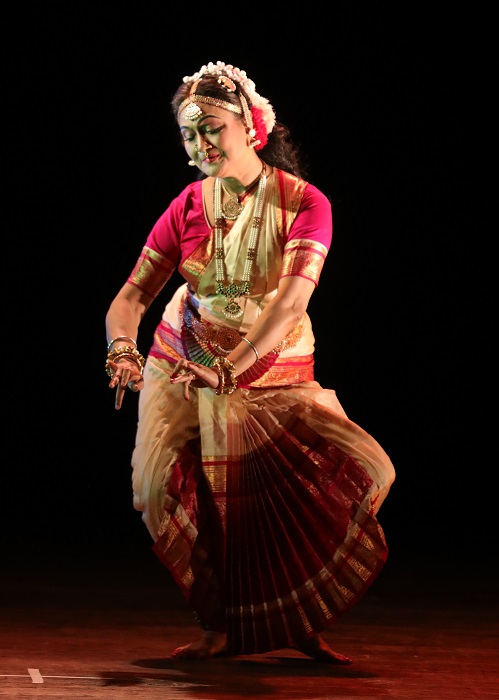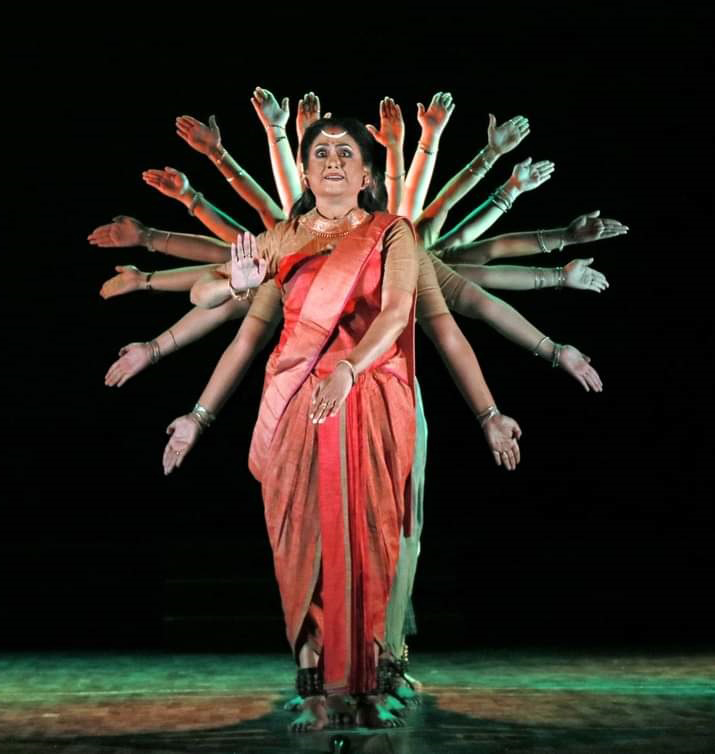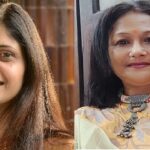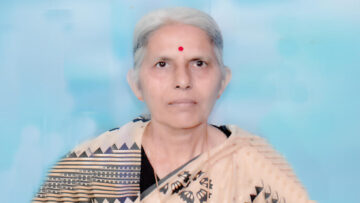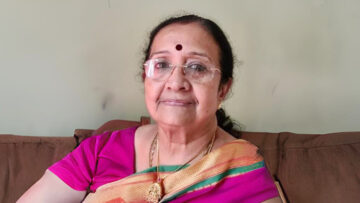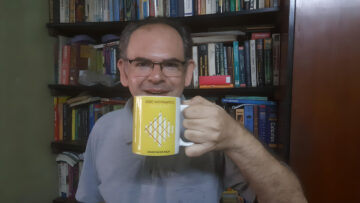What is that which draws us to the arts, to the singer, the dancer, the painter? How does the artist connect their art to life through their manifest body? As one dancer put it, “Is it the body owning a spirit, that is wanting to express something or is it the spirit that has manifested into this form in order to express?
Nandita Banerjee is a dancer and choreographer from the lineage of Dr Padma Subramanyam, specializing in the Vazhuvoor style of Bharatanātyam, after years of learning an amalgamation of various art forms. When she requested the Bharatanātyam guru to teach her, she was told to give up the Bengali style first, which tends to include different dances. So her interest became focused on Bharatanātyam which has its origins in temples.
In the recently held conference on Tantra and Tantric traditions, Smt Nandita, founder of Punascha Nriya Kala Kendra, Kolkata, spoke on Nartakātmā: Alignment of Tantra and Dance Performance. She is herself deeply immersed in the Shakta fold having got diksha not so long ago. For her Bhakti to Devi and Jñāna of her arts and its ultimate aim of union with the divine, inspire her every day.
Aesthetic theories of India use the principles of bhāva and rasa, which are intrinsic to both Tantra and nātya. As one observer, Jayadeva, put it recently (Sept, 2023), “As various bhāvas, invoke various rasas in the rasika, the various activities of the Nava-vidhi-bhakti based on the Lilas of Bhagavan/Bhagavatī lead to the invocation of their corresponding rasas in the devotee. When hearing the wonderful stories of the Bhagavatī in the Devī Bhāgavatham, Lord Śivā’s acts of anugraha in the Pauranic lore, the retelling of events in the Itihāsā etc. the corresponding rasās are invoked in us, and we experience each story as our own. We experience the valor of Mā Cāmuṇḍā, the fear of Bhaṇḍāsura, the glee of little Kṛṣṇā, the ecstatic devotion of the Rāsa Līla, the rage of Lord Rudrā, the moral dilemma of the Pāndavās and the deep despair of Kunti, as experiences of our own life. Thus all of these Śāstras are Rasa-Śāstrās, and hence are being adopted and made even more alive through Nāṭya.”
The primary rasa in all Indian art forms has been Bhakti, and all the others are deemed to be secondary to it. Jayadeva says, “Bhakti becomes the foundational rasa in reading, listening and dramatising our Śāstrās. Ācārya Abhinavagupta has stated in his work, Abhinavabhāratī, that the foundational rasa for the other 8 rasas is “Śāntarasa. Therefore, Bhaktirasa in the context of devotional activities, becomes the Mahā-rasa and “rasa” itself is no longer “Brahmānanda-sahōdara” (the smaller brother of the Supreme Bliss of Brahman), but Brahmānanda itself.”
For Nandita, learning both Kathak and the Kalamandalam style in her youth increased her desire to experience more. Her guru at that time was Abhoy Pal of Rabindra Bharati University. She later wanted to learn the karanas and the nātyashastra from Padma Subramanyam but did not know how to go about it as moving to Chennai was not an option. It increased her restlessness for after all the nātyashstra states, “One who performs well this Karana dance created by Maheswara will go free from all sins to the abode of this deity.” Dr Padma Subramanyam is best known for illustrating the Karanas based on 108 brief movement phrases describing specific leg, hip, body, and arm movements accompanied by hasta mudras described in the nātyashastra and other scriptures, and from depictions of the movements in sculpture in five South Indian temples – mainly Chidambaram, which contains depictions of the full set. She is the first dancer to reconstruct the Karanas as movements, which were considered mere poses earlier.
(Figure 1 : A pose from Bharatanatyam Performance)
Nandita met Padma Bhushan C V Chandrashekar, Bharatanātyam dancer, academician, dance scholar, composer, and choreographer and attended his workshops and dance recitals. She was still not satisfied. It was when her son went to study in Madras University in 2014, that she finally had a chance to meet Dr Padma Subramanyam. Health reasons prevented her from learning directly from her. She was advised to learn from one of her senior students in Kolkata.
For Nandita, the nātyashastra is like the “Shakti for Dance.” “Without learning or studying the nātyashastra you can perform. For instance there is movement when you walk, when you eat, when you do yoga. But when you add music, beats and laya it becomes dance. Similarly when you have the essence of the nātyashstra, you can actually realize God. The feelings well up and ultimately there is moksha, a complete surrender.”
When Nandita got her diksha, her feelings shifted. “When I was dancing, I started feeling I am the Lord. I could see the people in front of me, but I felt I had become the Lord and the dance was coming from inside me. Before my diksha, I would pray ‘Oh Lord come to me’, but later I would not call to the Lord, he would automatically come and be inside me.”
To refer to the commentator Jayadeva again, “the process of performing Bhakti is seen as Nāṭya within oneself, with one’s own body, engaging with the process of devoting to and serving the Iṣṭa, with the inner bhāva. If done correctly, the Bhaktirasa arises within the worshiper. Perhaps this is why bhāva is so very important in worship of the deity. While Abedha-bhāva leads to Śāntarasa, Bheda-bhāva leads to other rasās coupled with intense bliss of Bhakti in them. Thus even anger or disgust can become blissful if Bhakti is invoked within it. When we offer the āsana, puṣpa, naivedyam etc to the deity, we perform it with bhāva, in the role of the arcaka and this invokes Bhaktirasa within.”
Watch Smt. Nandita performing Jayadeva’s Ashtapadi here :
For Nandita, dance is being a student forever, and with it come some special experiences. The Ganga flows near her house and one Shivaratri while she was walking beside the Ganga, she saw a person short in stature, with matted hair, red dress and a firoza colour. He was dancing in abandonment, a little haphazardly she says. She too felt like dancing and took a video. When she returned home, the video was black where the dancer was, only showing the other people in the background.
(Figure 2: A still from Smt. Nandita Banerjee Dance Drama)
From childhood, Nandita had health issues, even a heart problem. The doctor advised her not to play a lot. One day her elder brother asked her to learn dance instead. She says as soon as she started dancing, “jo bhi ashubh tha, voh chala gaya (Whatever was inauspicious went away). I felt that in my dance I had become a form of Kali and whatever was stopping me, I was destroying it with my dance. My Sahasrara Chakra had been awakened.”
In her dance productions, Chidananda Vilasa, Krishnapriya, Meera, Ruparup, Nritya Rase Ritur Saje she alternates between being the rasika and the divine. Quoting her favourite Rabindranath Tagore song, Dibaso Rajani Ami Jeno Kar,” she says it’s a call from the heart, with all its might.
In the realm of words, I dwell in someone’s hope-filled sway,
My restless heart, tangled in the lush, longing for the day.
Whirling in a dance, in my eyes, a fervent plea,
If only I could glimpse and say, “Who has come?” in my reverie.
In the fluttering wind, I call out to the birds in the sky,
In wakeful night, I seek stars, oh, how I try.
If sleep’s shore touches the river’s gentle sweep,
In the realm of dreams, I’ll build bridges in my sleep.
So deeply I cherish, so fervently I yearn,
It seems they are nowhere near, my heart does discern.
Like a golden dawn, I’ll beckon them in delight,
To bring them close, I’ll call with all my might.
View the trailer of Krishnapriya here :
Disclaimer: The opinions expressed in this article belong to the author. Indic Today is neither responsible nor liable for the accuracy, completeness, suitability, or validity of any information in the article.

